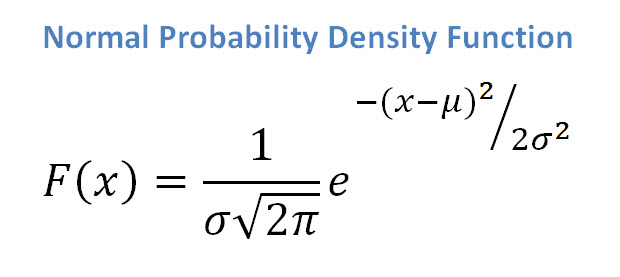

The normal curve would show the proportion of stripes that have various widths. Most members have amounts that are near the average some have amounts that are farther away from the average and some have amounts extremely distant from the average.įor example, a population could be all the stripes on all the zebras in the world. We need to get some brief definitions out of the way so that we can start to describe data using Excel functions.įrom cholesterol to zebra stripes, the normal probability distribution describes the proportion of a population having a specific range of values for an attribute. Brief Definitions Each number in this Excel chart’s bell-shaped curve is a z value. Therefore, as painlessly as possible, let’s take a closer look at how we work with them using Excel. The Central Limit Theorem says that those averages tend to have a normal distribution. Now select another random sample of the same number, and find the average of their measures. Randomly select at least 30 members from that population, measure them for some characteristic, and then find the average of those measures. Many Six-Sigma calculations assume normal distribution.Īs a final example, here’s a surprising occurrence of the normal curve: Take any population, whether it’s normally distributed or not.Most measurement errors are assumed to be normally distributed.The width of stripes on a zebra is said to be normally distributed.The measure of LDL cholesterol is normally distributed in adults.The height of each gender in a population is normally distributed.One interesting thing about the normal curve is that it occurs frequently in many different settings: This is a commonly used area of statistics, and one for which Excel provides several useful functions. This is unfortunate, because in business it’s often useful to have some grasp of that topic.įor all these reasons, I thought it would be worthwhile to briefly explore normal-or “bell-shaped”-curves in Excel.
#Normal cdf formula how to
Many of us were introduced to statistics in school and then forgot what little we learned…often within seconds of the final exam.Īlso, when we took statistics, many of us weren’t taught how to use it with Excel. If you need to, you can adjust the column widths to see all the data.When a visitor asked me how to generate a random number from a Normal distribution she set me to thinking about doing statistics with Excel. For formulas to show results, select them, press F2, and then press Enter. When cumulative = TRUE, the formula is the integral from negative infinity to x of the given formula.Ĭopy the example data in the following table, and paste it in cell A1 of a new Excel worksheet. The equation for the normal density function (cumulative = FALSE) is: If mean = 0, standard_dev = 1, and cumulative = TRUE, NORMDIST returns the standard normal distribution, NORMSDIST. If standard_dev ≤ 0, NORMDIST returns the #NUM! error value. If mean or standard_dev is nonnumeric, NORMDIST returns the #VALUE! error value. If cumulative is TRUE, NORMDIST returns the cumulative distribution function if FALSE, it returns the probability mass function. A logical value that determines the form of the function. The standard deviation of the distribution.Ĭumulative Required. The value for which you want the distribution. The NORMDIST function syntax has the following arguments: Although this function is still available for backward compatibility, you should consider using the new functions from now on, because this function may not be available in future versions of Excel.įor more information about the new function, see NORM.DIST function.

Important: This function has been replaced with one or more new functions that may provide improved accuracy and whose names better reflect their usage.


 0 kommentar(er)
0 kommentar(er)
